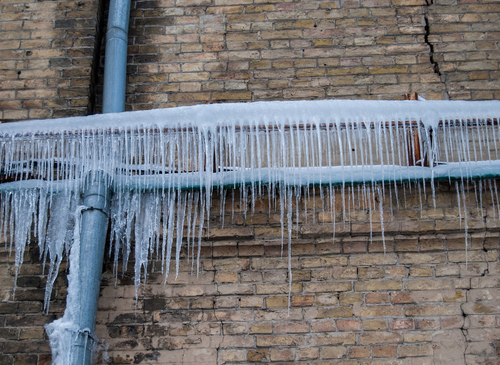Have you been hunting for resources concerning How To Avoid Freezing Pipes?

Cold weather can wreak havoc on your plumbing, particularly by freezing pipelines. Here's how to stop it from taking place and what to do if it does.
Introduction
As temperature levels drop, the risk of frozen pipelines boosts, possibly causing costly repair services and water damage. Recognizing just how to stop frozen pipelines is crucial for homeowners in chilly climates.
Comprehending Frozen Pipelines
What causes pipelines to freeze?
Pipelines ice up when revealed to temperature levels below 32 ° F (0 ° C) for prolonged durations. As water inside the pipelines freezes, it broadens, putting pressure on the pipe walls and potentially triggering them to burst.
Dangers and damages
Icy pipelines can cause water disturbances, property damages, and costly repair services. Ruptured pipelines can flood homes and cause comprehensive structural damages.
Signs of Frozen Pipes
Determining icy pipes early can stop them from bursting.
Just how to identify icy pipes
Try to find lowered water flow from taps, unusual odors or noises from pipes, and visible frost on revealed pipelines.
Prevention Tips
Protecting prone pipelines
Cover pipelines in insulation sleeves or utilize heat tape to shield them from freezing temperature levels. Focus on pipelines in unheated or outside locations of the home.
Home heating strategies
Maintain indoor spaces effectively warmed, specifically locations with pipes. Open up cupboard doors to permit cozy air to distribute around pipes under sinks.
Protecting Outside Plumbing
Yard pipes and outdoor taps
Disconnect and drain pipes garden hose pipes prior to wintertime. Install frost-proof faucets or cover exterior faucets with shielded caps.
What to Do If Your Pipes Freeze
Immediate activities to take
If you believe frozen pipelines, keep taps available to ease stress as the ice thaws. Utilize a hairdryer or towels taken in warm water to thaw pipes gradually.
Long-Term Solutions
Architectural modifications
Take into consideration rerouting pipes away from outside wall surfaces or unheated locations. Include extra insulation to attics, basements, and crawl spaces.
Upgrading insulation
Invest in top quality insulation for pipes, attic rooms, and walls. Appropriate insulation helps preserve constant temperature levels and decreases the threat of icy pipelines.
Final thought
Avoiding icy pipes needs positive actions and quick feedbacks. By comprehending the reasons, indications, and safety nets, house owners can shield their plumbing throughout cold weather.
6 Proven Ways to Prevent Frozen Pipes and Protect Your Home
Disconnect and Drain Garden Hoses
Before winter arrives, start by disconnecting your garden hoses and draining any remaining water. Close the shut-off valves that supply outdoor hose bibs and leave the outdoor faucet open to allow any residual water to drain. For extra protection, consider using faucet covers throughout the colder months. It’s also important to drain water from any sprinkler supply lines following the manufacturer’s directions.
Insulate Exposed Pipes
Insulating your pipes is an effective way to prevent freezing. Pipe insulation is readily available at home improvement stores and is relatively inexpensive. Pay close attention to pipes in unheated areas such as the attic, basement, crawl spaces, or garage. Apply foam insulation generously to create a buffer against the cold. You can also wrap your pipes in heat tape or thermostat-controlled heat cables for added warmth.
Seal Air Leaks
Inspect your home for any cracks or openings that could let in cold air. Seal any holes around the piping in interior or exterior walls, as well as the sill plates where your home rests on its foundation. Additionally, make sure to keep your garage door closed unless you’re entering or exiting. Leaving it open creates a significant air leak that can lead to frozen pipes.
Allow Warm Air Circulation
During cold snaps, it’s essential to allow warm air to circulate evenly throughout your home. Leave interior doors ajar to promote better airflow. Open kitchen and bathroom cabinets to help distribute heat consistently around the rooms. If you have small children or pets, be sure to remove any household chemicals or potentially harmful cleaners from open cabinets for safety.
Let Faucets Drip
A small trickle of water can make a big difference in preventing ice formation inside your pipes. When temperatures drop significantly, start a drip of water from all faucets served by exposed pipes. This continuous flow helps prevent the water from freezing. Additionally, running a few faucets slightly can relieve pressure inside the pipes, reducing the chances of a rupture if the water inside does freeze.
https://choateshvac.com/6-proven-ways-to-prevent-frozen-pipes-and-protect-your-home/
:strip_icc()/snow-outdoor-faucet-pipes-4af65d1e5e904fb1aa7bf74071fe5d89.jpg)
As a fervent person who reads on Prevent Frozen Pipes , I thought sharing that editorial was a good idea. If you please take the opportunity to share this page if you enjoyed reading it. Thanks for your time spent reading it.
Set An Appointment
Comments on “How to Protect Your Plumbing from Freezing: Critical Strategies”